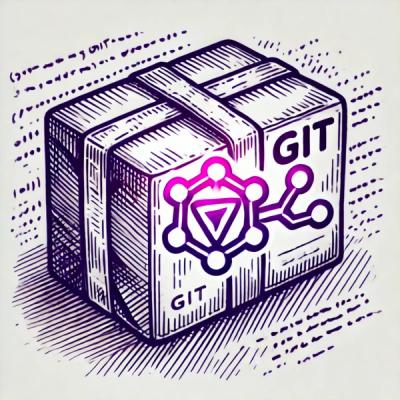🏃 JPL EDRN LDAP Utilities
This package just contains some handy LDAP utilities for the Early Detection Research Network Directory Service. The EDRN Directory Service is an OpenLDAP-based standalone directory that also happens to handle users and groups for not just EDRN but two other consortia:
- Consortium for Molecular and Cellular Characterization of Screen-Detected Lesions
- National Institute of Standards and Technology
💽 Installation
This software requires Python 3. Python 3.9 or later is recommended, but Python 4 is not. Typically, you'll make a virtual environment and install the software with a litany like:
python3 -m venv ldap-utils
cd ldap-utils
bin/pip install --upgrade --quiet setuptools wheel pip
bin/pip install jpl.edrn.ldap.utils==X.Y.Z
where X.Y.Z is the version you want. To upgrade an existing installation, add --upgrade. Then "activate" the virtual environment (or use full paths to programs like ldap-utils/bin/create-users).
👩🔧 Usage
Currently the only utility is the create-users script, which you run as follows:
create-users USERSFILE
where USERSFILE is a CSV file containing the users and optionally their plain text passwords to add to the LDAP server. For example, you'd run:
create-users --url ldaps://naming.jpl.nasa.gov --replace newusers.csv
to add the users in newusers.csv to the LDAP server on naming.jpl.nasa.gov. If no USERSFILE is given, the program will read CSV data from the standard input.
💁♀️ Command-line Options
You can fine-tune the behavior of create-users with the following command-line options:
| Option | Usage | Default |
|---|
-r, --replace | If given replace existing users, overwriting all attributres | Do not replace |
-b, --base | Base DN for all users | ou=users,o=NIST |
-o, --objectclass | Object classes for new users | (see below) |
-h, --url | URL to LDAP server | ldaps://edrn-ds.jpl.nasa.gov |
-D, --manager-dn | DN of the LDAP manager user | A reasonable default |
-w, --password | Password of the LDAP manager user | (see below) |
⚠️ Be careful with -r or --replace. If a user has changed their password, email address, or other attributes and their username appears in the CSV file, those changes will be lost.
In addition, you can specify either --debug which causes create-users to print verbose debugging messages during its operation or --quiet which causes it to only report errors. By default it gives informational messages only. You can also give --help to get a summary of all the command-line options, including --version which tells you what version you're running.
🎓 Object Classes
The default object classes for users are:
inetOrgPersonorganizationalPersonpersontop
You can override this by providing -o or --objectclass; for example:
create-users … --objectclass edrnPerson inetOrgPerson person top …
🔑 LDAP Manager Password
The create-users program naturally needs the password for the LDAP manager so it can make updates to the user data. You can provide the password on the command line with -w or --password, but beware that other programs and users on the system will be able to see this password.
If -w or --password is not given, the password will be taken from the MANAGER_DN_PASSWORD environment variable. If it is empty or unset, you will be prompted for the password—which is the safest way of providing it.
🗂️ CSV File Format
The single CSV file expected by create-users should have the following columns:
| Column | Purpose | Mapped LDAP Attribute |
|---|
| 0 | Bare user ID (not a distinguished name), such as joe or jschmoe | uid (plus base DN) |
| 1 | Surname, such as Schmoe | sn |
| 2 | Common name, such as Joe Schmoe | cn |
| 3 | Email address | mail |
| 4 | Password, but may be blank (see below) | userPassword |
If the first row and first column (row 0, column 0) contains the word uid, it's assumed to be a "header row" and is skipped. If there are additional columns beyond these five, they're ignored. Note that column 4 should contain the plain text password with which to create the user. However, if it's blank, then a random password will be generated for the user.
👉 Note: Randomly generated passwords are not recoverable. Those users will need to use your "forgotten password" feature (if any) to reset their passwords.
Here's an example CSV file (with header row) that describes three users, the middle one of which will get a random password:
uid,sn,cn,mail,password
joe,Schmoe,Joe Schmoe,joe@joe.com,h1ghly s3cr3t
waldo,Waldo,Where Is Waldo,waldo@waldo,com
lsimpson,Simpson,Lisa Simpson,lisa@simpsons.tv,bGdfj3z!jf01
👨👩👧👦 Groups
The create-users program does nothing with LDAP groups of users. You'll have to manage those on your own. For example, you might make an LDIF file like this
dn: cn=My Group,ou=groups,o=NIST
objectClass: groupOfUniqueNames
objectClass: top
cn: My Group
uniqueMember: uid=joe,ou=users,o=NIST
uniqueMember: uid=waldo,ou=users,o=NIST
uniqueMember: uid=lsimpson,ou=users,o=NIST
and use ldapadd to create the group.
🔧 Development
To develop this locally, try the following:
git clone https://github.com/EDRN/jpl.edrn.ldap.utils
cd jpl.edrn.ldap.utils
python3 -m venv .venv
.venv/bin/pip install --upgrade --silet setuptools build dist wheel
.venv/bin/pip install --editable .
.venv/bin/create-users …
👥 Contributing
You can start by looking at the open issues, forking the project, and submitting a pull request. You can also contact us by email with suggestions.
🔢 Versioning
We use the SemVer philosophy for versioning this software. For versions available, see the releases made on this project.
👩🎨 Creators
The principal developer is:
📃 License
The project is licensed under the Apache version 2 license.



